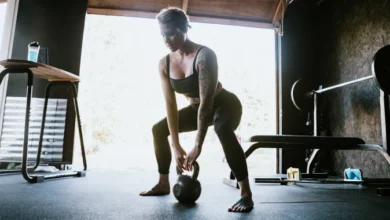Achieving optimal physical health is a journey that requires more than just hitting the gym. It’s about creating a balanced lifestyle where your body’s health is prioritized and nurtured through various practices. For men, especially, optimal health ensures vigor, strength, and the endurance needed to face daily challenges. Below are five insightful tips that will guide you on a path of wellness, ensuring you achieve and maintain your peak physical health.
1. Adopt a Balanced Diet
Your body is a complex machine, and the fuel you provide dictates its performance. Nutrition plays a critical role in how you feel and function.
Start by assessing your diet and identifying areas for improvement. Incorporate a balance of nutrients, including proteins for muscle repair, carbohydrates for energy, and fats for joint health and energy reserves. Remember, vitamins and minerals are non-negotiable for overall body function.
Hydration is key. Men often require more water due to larger body mass, and with physical activity, your need increases. Make water your go-to, and keep alcohol and sugary drinks to a minimum. These small yet steady changes will enhance your body’s functionality and overall physical health.
2. Regular, Varied Exercise

Routine physical activity is paramount. However, variety in your exercise regimen can be a game-changer for achieving optimal health.
Consistency is vital. Find activities you enjoy to ensure you stay motivated. Remember, exercise is a celebration of what your body can do, not a punishment – so make it enjoyable and sustainable.
Here are some exercises you can do as a man:
Push-ups
Push-ups are a classic full-body workout primarily targeting your chest, shoulders, and triceps. They also engage your core and lower body to a lesser extent. Begin in a high plank position, lower your body until your chest touches the floor, and then push back up. Keep your body in a straight line throughout the movement.
Squats
Squats are a highly effective exercise that targets and strengthens the muscles in your entire lower body, including the quadriceps, hamstrings, and glutes. Assume a shoulder-width stance, gently descend into a seated position as if settling into an imaginary chair, and then rise back to a standing posture. Be mindful to prevent your knees from surpassing your toes to mitigate any potential risk of injury.
Lunges
Lunges work your lower body and core, focusing on one leg at a time. Step forward with one foot, gradually lowering your body until your front knee forms a perfect 90-degree angle. Push back up to standing and repeat with the other leg. Maintain a straight back and avoid leaning forward.
Planks
Planks are a valuable core exercise that engages your upper and lower body. Start in a forearm position with your elbows directly below your shoulders and your body in a straight line from head to heels. Hold the position for as long as possible, ensuring your hips don’t sag.
3. Prioritize Sleep and Rest
Rest is often overlooked in its importance to physical health. Your body needs time to recover from the exertions of daily life, especially if you engage in strenuous physical activities.
Aim for 7-9 hours of quality sleep. Good sleep enhances muscle recovery, improves performance, and reduces the risk of weight gain and diseases. Create a restful environment free of electronic distractions, and maintain a regular sleep schedule.
Listen to your body. It might be time for a break if you’re feeling overly tired. Short naps, relaxation techniques, and stress management are crucial for holistic health and optimal physical functioning.
4. Stress Management Techniques

Chronic stress can wreak havoc on your body, leading to impaired immune function, heart issues, and more. Managing stress is crucial for maintaining optimal physical health.
Identify stress triggers and work on techniques to confront them. Meditation, deep breathing exercises, and mindfulness can reduce stress levels, bringing a sense of calm and control.
Physical activity is also a potent stress reliever. Regular exercise, hobbies, and social activities can distract you from daily pressures, improve your mood, and boost your energy levels. Keeping stress at bay is not just a mental exercise; it’s a physical necessity.
5. Engaging in Outdoor Sports and Recreational Activities
Outdoor activities offer a unique combination of physical exercise and mental relaxation, both conducive to your overall health. Engaging in sports isn’t just about competition; it’s about harnessing nature to rejuvenate your body.
Hiking, for instance, is a way to combine cardiovascular exercise with strength training. But to increase comfort and endurance during these long, adventurous treks, investing in a hunting backpack with a frame is wise. This backpack evenly distributes weight, ensuring stability and reducing the risk of back injuries. It allows you to carry necessities for survival, especially during extended or overnight trips in the wilderness.
Aside from hiking, try canoeing, mountain biking, or rock climbing. These activities challenge your body and introduce you to new skills and passions. Remember, the key here is to enjoy the process as much as the results.
In Summary
Optimal physical health for men encompasses various aspects, including proper diet, regular exercise, sufficient rest, stress management, and engaging in physical activities. By adopting these tips, you commit to a lifestyle that prioritizes your well-being, allowing you to live more fully and capably. Every small change you integrate into your daily routine collectively produces a healthier, more vibrant you. Consistency is your greatest ally in this journey, and self-care is your ultimate goal.
For more valuable information visit our website.





